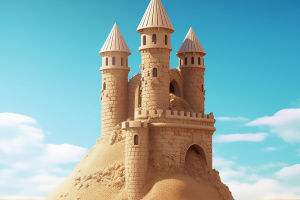Balloons have held a significant place in human culture and daily life since their inception.
These lightweight, colorful decorations and toys have not only served as sources of joy for children and adults alike but have also become symbols of hope, dreams, and happiness across various cultures.
Early versions of balloons were made from animal bladders or intestines, fashioned into simple forms for entertainment.
However, the balloon as we know it today did not emerge until the 19th century. In 1824, British scientist Michael Faraday introduced rubber balloons in a laboratory setting to study the properties of gases.
This experiment marked the beginning of the modern balloon, laying the foundation for the advanced balloon manufacturing techniques that would follow. With the progression of science and technology, both the materials used in balloon production and the processes involved have evolved significantly.
From natural rubber in the early days to latex in the mid-20th century, and later to aluminum foil and helium balloons in more recent times, the variety and applications of balloons have expanded dramatically.
In contemporary society, balloons serve numerous purposes, functioning as both toys and decorative elements. In the world of children, balloons are synonymous with joy and celebration. Whether at a birthday party, a family gathering, or an outdoor event, balloons capture the attention and imagination of children.
Their lightness, vibrant colors and the wide range of shapes and cartoon patterns available make balloons particularly appealing to young ones. For adults, balloons are often used to enhance the atmosphere of celebrations and special occasions.
From weddings and birthday parties to holiday celebrations, balloons play a crucial role in creating a festive and cheerful environment. Through the careful selection of shapes, colors, and arrangements, balloons can convey specific emotions and themes.
For instance, at weddings, white and gold balloons often symbolize purity and happiness, while during holiday celebrations, a mix of colorful balloons can evoke a sense of joy and abundance.
Beyond their physical presence, balloons are imbued with rich cultural and symbolic meanings. In many cultures, balloons are seen as emblems of hope and aspiration. The act of releasing balloons is often associated with sending good wishes for the future as if these balloons could carry dreams to the skies.
This practice is common during festivals such as the Lantern Festival in China or New Year’s celebrations in Western cultures, where releasing balloons symbolizes hopes for the coming year and desires for a brighter future.
Additionally, balloons are frequently linked to notions of childhood and innocence. Their light, colorful appearance often triggers nostalgic memories of carefree childhood days.
In literature and art, balloons are frequently depicted as symbols of innocence, freedom, and dreams, carrying deeper meanings beyond their simple form.
However, as the use of balloons has become more widespread, environmental concerns have come to the forefront. Although traditional latex balloons are made from natural materials, they take a significant amount of time to decompose in the environment.
When discarded carelessly and in large quantities, they contribute to environmental pollution. This issue is even more pronounced with aluminum foil balloons, which are more challenging to degrade due to their specialized materials, thereby exacerbating environmental harm.
Consequently, many countries and regions have implemented policies to limit or ban the release of balloons during outdoor events. At the same time, efforts to develop and promote environmentally friendly balloons are ongoing.
Some manufacturers have begun producing balloons that can degrade more rapidly or promoting reusable balloons as a means to reduce environmental impact.
Additionally, there is a growing awareness among the public about the environmental consequences of balloon use, leading more people to seek out more eco-friendly alternatives for celebrations.
Balloons, despite their simplicity, have become deeply entrenched in our lives, adding color and joy to our celebrations while also carrying significant symbolic weight in various cultures.
Yet, as we continue to enjoy the happiness that balloons bring, it is crucial to remain mindful of their environmental impact and to seek out more sustainable practices.
With advancements in technology and an increasing awareness of environmental issues, the future of balloons looks promising. They have the potential to become more eco-friendly and sustainable while continuing to bring happiness and cheer to people’s lives.


